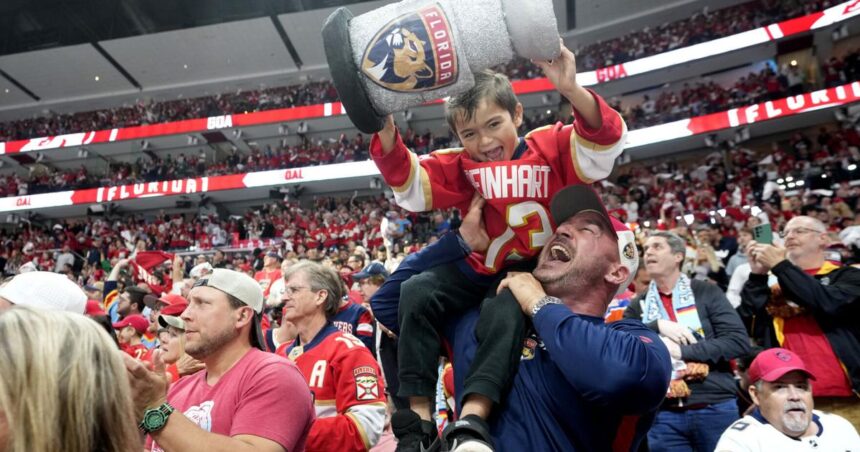SUNRISE, Fla. — The spark in Leo Jungerman’s eyes when he watched his first hockey game was different.
He’d tried other sports like soccer and tennis, his father Alex said. But a hockey game featuring the Toronto Marlies — the Toronto Maple Leafs’ minor league team — is where an 8-year-old Leo’s love truly began for the sport.
“When we were watching the game, I spent a big chunk of the time looking at him,” Alex Jungerman said, “and it was kind of fascinating. So when he expressed interest in trying the game, I jumped right in.”
Alex, who had moved his family from Brazil to Florida that year in 2015, started looking for youth hockey programs for Leo, who knew nothing about hockey and couldn’t even skate.
That’s when he came across the Florida Panthers Learn to Play initiative — a program designed to introduce boys and girls to hockey while reducing barriers to entry for the sport. It’s part of the Panthers’ overall effort to grow the game in untapped communities, particularly the rapidly growing Hispanic market.
People are also reading…
Panthers fans cheer after the Panthers defeated the Oilers in Game 1 of the Stanley Cup Final, held June 8, in Sunrise, Fla.
Almost 30% of Floridians are Latino, according to the U.S. Census Bureau, higher than the national average of about 19%. There are more than 500,000 Hispanic residents in Broward County, Florida, where the Panthers’ Amerant Bank Arena is located. That number increases to more than 1.7 million in neighboring Miami-Dade, Florida’s most populous county.
“The demographic makeup in Florida certainly expresses an interest that it’s extremely important to connect to the Latino community,” said Rob Knesaurek, the NHL’s senior vice president of community development and industry growth. “They’re deeply rooted in sports. Why wouldn’t they pick our sport?”
Knesaurek added the NHL is more intentional in popularizing the sport in Latino communities, where the league hasn’t been traditionally proactive. That started with league-wide efforts to connect with Hispanic fans as well as those in underserved communities, and it trickles down to grassroots initiatives by individual teams.






